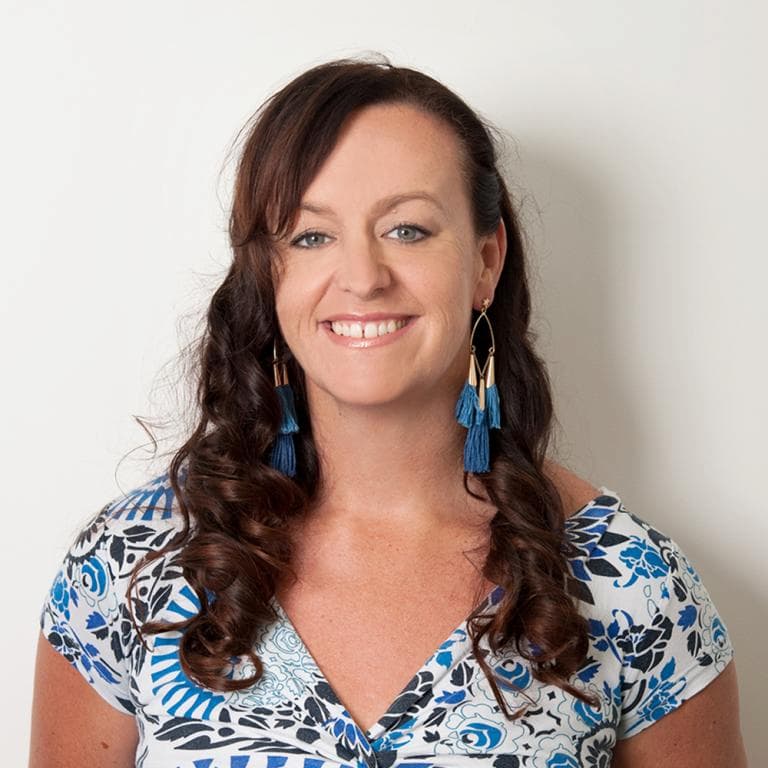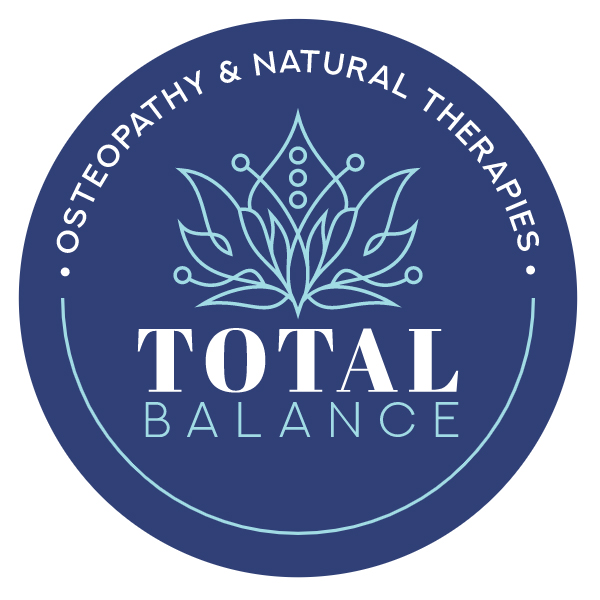
Total Balance Osteopathy
Clicking on the Send Me Details Now button opens an enquiry form where you can message Total Balance Osteopathy directly
Osteopathy / Joint Mobilisation + Manipulation
Dry Needling/ Kinesiotaping/ Biodynamics/ Remedial Massage
Total Balance - Osteopathy & Natural Therapies
Servicing area
Mid North CoastFocus areas
Welcome to Total Balance Osteopathy & Natural Therapies!
Our team of dedicated therapists primary focus is an individually tailored treatment for each and every person who attends the clinic.
Services
- Osteopathy
- Dry Needling
- Kinesiotaping
- Remedial Massage
Our Team
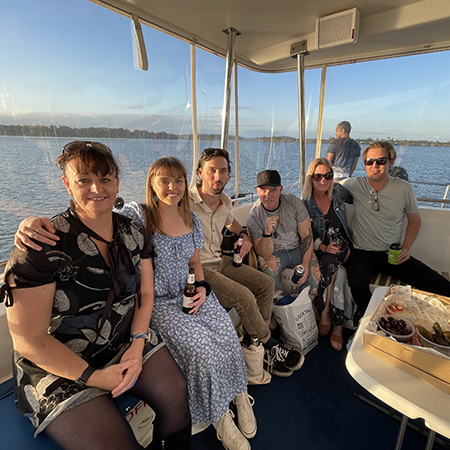
Osteopaths
Kim Ritchie
Kim is the principal Osteopath at Total Balance Osteopathy & Natural Therapies. She completed her training at University of Western Sydney (UWS) – earning a Bach of Science (Osteopathy), and a Masters of Osteopathy. She honed her clinical knowledge working in Sydney for a couple of years before opening her practice, Total Balance Osteopathy & Natural Therapies, in Port Macquarie.
Prior to her Osteopathic studies, Kim gained a Cert IV in health, fitness and sport training and an Associate diploma in Massage Therapy. Kim has has also completed her CrossFit Level 1 Trainers certificate.
During her years in private practice Kim has continued to develop her skills by completing extra training in Paediatrics, Visceral Osteopathy, Cranial Osteopathy, Biodynamic Osteopathy and several courses in Dry Needling, Kinesiology and Rocktaping. She has also completed the 10 years training, completing all 10 phases of Biodynamics. These additional skills allow Kim to offer a more personalised treatment protocols across a broad range of modalities.
Kim utilises her extra training in her roles as a therapist treating on the Rocktape Recovery team at the Australian CrossFit regionals, The Australian CrossFit Championship, and the Downunder CrossFit Championships as well as volunteering to treat at numerous local CrossFit competitions.
Kim loves the challenges and rewards of treating these high-level athletes during high volume competitions. She sees these as opportunities to hone skills, or sharpen the sword, so to speak, in a high-pressure environment.
Kim is a course presenter for Rocktape Australia, conducting courses both locally and at the Universities. She is also ateaching member of the Australian Biobasics group and has lectured for Southern Cross University.
Kim loves to keep physically fit and active, and she loves to keep her patients engaged in the physical activities they choose by supporting the wellbeing of her patients.
Outside of the clinic Kim can be found training at CrossFit herself or enjoying the beautiful coastal lifestyle in Port Macquarie. She also loves to geek out on a great science or health and well-being podcast so be sure to ask her about these if you visit the clinic.
Tallow Baillie
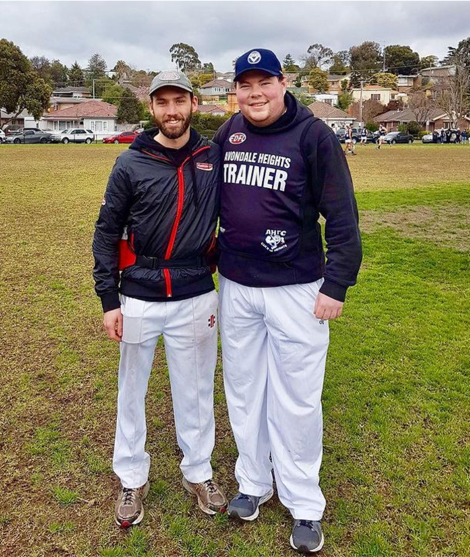
Tallow is an energetic and motivated osteopath who graduated from RMIT University Melbourne in 2021. Tallow studied a 5 year double degree in a bachelor of health science and a bachelor of applied science (osteopathy). Tallow was drawn to the profession of osteopathy through his love of sport and human movement.
Growing up in the snowy mountains of Rural NSW sport became Tallows passion. Engaging in skiing, mountain biking and playing rugby has driven him to a profession in which he can better understand and manage the human body and the way it functions. Through Osteopathy he has developed these skills and loves to apply this knowledge in his management of patients, to empower them on their rehabilitation journey. It was through this process that he became driven to engage amd improve access to healthcare throughout regional Australia.
Tallow uses a broad range of techniques to manage pain and dysfunction in the body; from hands on osteopathic manual therapies, education, exercise and mindfulness. These techniques allow him to consider the whole patient including their entire biopsychosocial experince and confront the complex nature of pain in holistic manner that is Osteopathy.
Alongside his studies Tallow was engaged in managing high performance athletes in basketball, AFL and gym goers which allowed him to refine his approach to treating acute injuries and post surgical management. It was here that Tallow picked up his knowledge on taping and furthered his professional development with Dry Needling and cupping (level 1-manual medicine Australasia), alongside deepening his love for exercise and human movement. These skills have translated well into his management of Chronic Pain patients, enjoying managing the complexity of pain to accept the differences between individuals to tailor a person-centred approach to each patient he encounters.
When Tallow is out of the clinic you may find him down the beach, off camping with his partner, or immersed in the bush running, riding or bush walking. This allows him to maintain an active lifestyle to compliment his work in the physical therapy profession.
Zach Brown
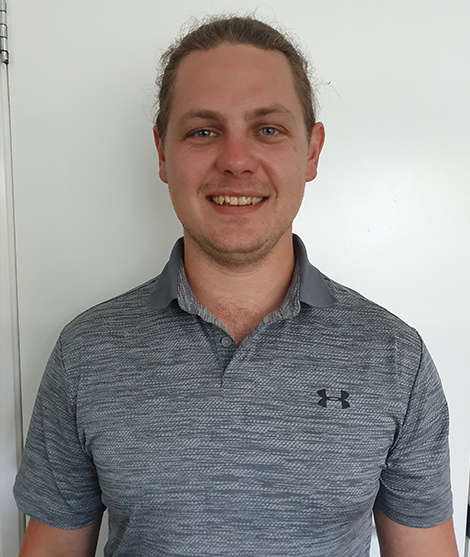
Zach is a recent graduate from TAFE NSW, holding a Diploma of Remedial Massage Therapy. Now currently studying a Bachelor of Sport and Exercise Science with the University of Newcastle.
Effective treatment must be tailored to the individual's needs and circumstances. By a holistic approach to health with education Zach takes pride to help you improve your health and wellbeing.
Zach enjoys using his previous experience in exercise prescriptions, to tailor exercises and stretches to your specific needs. He strongly believes in the body's ability to adapt and overcome injury. Using a range of soft tissue techniques, Zach encourages feedback to tailor the treatment to what works best for you. Focusing on trigger points and myofascial release to restore movement and reduce pain.
With an active upbringing on a farm and playing many years of competitive rugby league and touch football, Zach understands the benefits of being active and the positive impact it can have on your physical and mental health.
About Osteopathy
Osteopathy is a "whole body" system of manual therapy, based on unique biomechanical principles, which uses a wide range of techniques to treat musculo-skeletal problems and other functional disorders of the body.
It was developed in America in the 1870’s by a Missouri Doctor, Andrew Taylor Still, and has developed to the point where it is now widely recognised throughout the world.
The World Health Organisation recognises the Osteopathic concept of somatic dysfunction as being scientifically proven, and the British Medical Association also recognises Osteopathy as a discrete medical discipline.
In Australia, Osteopaths are statutorily registered practitioners and complete a five year, full-time university degree. This training covers anatomy, physiology, pathology and general medical diagnosis in addition to Osteopathic techniques.
Osteopaths are primary care practitioners, and are trained to be able to recognise conditions which require medical referral. They are also trained to carry out standard medical examinations of the cardiovascular, respiratory and nervous system.
Osteopaths use specific orthopaedic and osteopathic examination techniques to work out the cause of your condition.
We will then treat you using a combination of different techniques depending on your specific injury or problem.
These may include:
- Massage
- MET: Muscle energy technique
- Joint mobilization
- Joint manipulation
- Myofascial release techniques
- Stretching
- Gentle osteopathic techniques (cranial and biodynamics)
- Rehabilitation exercises
- Taping (sports/rigid and kinesio)
What do we treat?
Some of the conditions people see Osteopaths for are:
- Head ache – the most common type of headaches originate from muscle stiffness or joint strain in the neck and/or upper thoracic region.
- Back pain – up to 80% of Australians suffer back pain at some point in their life. Osteopaths, as holistic practitioners, consider the many factors that can contribute to your back pain.
- Arthritis
- Sports injuries- Including muscle strains and sprains
- Whip Lash – muscle damage and injuries from whiplash can contribute to long term pain if unaddressed.
- Shoulder Problems – sitting in front of computers and sedentary occupations can contribute to complex shoulder problems.
- Tennis Elbow – did you know this is frequently caused by repetitive use of a computer keyboard and mouse.
- Musculoskeletal related symptoms of asthma – Osteopaths don’t treat acute asthma; however, sufferers can benefit from osteopathic treatment to relieve musculoskeletal related symptoms, such pain and muscle tightness that may assist with easier breathing and movement?.
- RSI – Repetitive strain injuries may be prevented or helped with regular osteopathic treatment and advice.
- Posture problems – Can lead to other common conditions such as sciatica, upper back pain and headaches.
- Carpal Tunnel Syndrome – surgery may not be your only option, consider manual therapy in the management of this condition.
- Digestive Problems – Adults are not the only people who suffer digestive problems, babies and children can also respond well to osteopathic care for these conditions.
- Sciatica – Can be caused by a range of different problems. Your osteopath can assist in identifying the underlying cause.
- Knee Pain – With the right treatment and advice knee pain can be effectively managed.
- Shin Splints – Poor footwear, including thongs, can lead to shin splints. Osteopaths treat the soft tissues as well as the joints to help with this condition.
- Heel or foot pain –Osteopaths can help with pain from conditions such as plantar fasciitis, ankle sprain, tendonitis or heel spurs.
- Pregnancy and Post Natal Care – Your osteopath can help prevent or manage a wide range of pre and post-natal conditions, either solely or in conjunction with other health care practitioners.
In addition, Osteopaths can utilise a wide variety of gentle non-manipulative techniques for use on infants and small children.
What can be expected during an osteopathic consult
Your osteopath will ask questions about your problem and symptoms. They may also ask about your medical history, any medications you are taking, as well as factors that may not appear to be directly related to your problem. If your medical condition changes between osteopathic appointments you should tell your osteopath at your next consultation.
Next, your osteopath will conduct a full osteopathic examination and if necessary, clinical tests, this may involve diagnostic, orthopaedic or neurological tests, postural assessments and activities or exercises that will determine how best to manage your condition. The examination may include passive and active movements, such as the osteopath lifting your arms or legs.
Osteopathy takes a holistic approach to treatment, so your practitioner may look at other parts of your body, as well as the area that is troubling you. For example, if you have a sore knee, your osteopath may also look at your ankle, pelvis and back.
Your osteopath may also provide education and advice to help you manage your condition between appointments. This may include giving you exercises to do at home or work.
Appointments can be made by contacting the clinic or booking here online.
Our FAQs
What does treatment involve?
Osteopathic treatment is a multimodal treatment approach meaning that it uses a range of techniques and approaches to treat one condition. Overall Osteopathic treatment will not only focus on your symptoms but the cause of those symptoms as well. Osteopaths look at the soft tissues including; Muscles, ligaments and tendons, the hard tissues including; joints, bones and cartilage alongside the nervous system. Osteopathic treatment involves a range of techniques to work on all these areas including;
- Soft tissue massage
- Myofascial release and stretching
- Muscle energy techniques
- Joint articulation
- Harmonic techniques
- Joint manipulation and mobilization
- Dry needling
- Postural dynamic inhibition
These techniques are used in conjunction with a range of self-management strategies to optimize your treatment, including;
- Exercise programs focusing on stretching, strengthening and getting moving
- Education
- Postural and ergonomic advice
- Lifestyle advice
What is an Osteopath?
Osteopaths are trained through university and are government registered allied health professionals specialising in musculoskeletal pain management.
All Osteopaths in Australia are registered with the Australian health practitioner regulation agency (AHPRA) and Osteopathy Australia
Osteopaths have completed a mandatory 5 years of tertiary education to receive their qualifications as an Osteopath. This either includes a Double bachelor's degree in exercise science and a Bachelor of applied science (Osteopathy), Or; a Bachelor of health science and a masters of Osteopathy.
This training gives Osteopaths extensive expertise in recognising and diagnosing neuro-musculoskeletal conditions which can be appropriately managed through Osteopathic Care. This involves a range of hands on and hands off modalities allowing Osteopaths to take care of you and enable you to care for yourself. Through manual therapy, education, exercise, lifestyle advice and coordinating care; here at total balance Osteopathy we have your best interests at the forefront of all interventions.
Alongside this Osteopaths have received extensive training to recognise conditions which do not fall within our scope of practice including cardiovascular, respiratory, neurological conditions etc. To facilitate appropriate referral and follow up of care so that nothing will be missed.
Biodynamics in the cranial field
Biodynamics in the cranial field of Osteopathy is a holistic approach to treating patients with a range of physical and emotional issues. It uses gentle manual techniques to assess the body's relationship between structure and function, and then applies corrective forces to facilitate the body's natural healing process. The biodynamic approach focuses on restoring balance to the body by addressing the underlying causes of dysfunction. This form of therapy is used to treat a
variety of conditions, including headaches, neck and back pain, TMJ, and chronic pain. Biodynamic osteopathy can be used as an alternative or in addition to other forms of treatment, and can help restore balance, reduce pain, and improve overall health and well-being.
Dry Needling
Dry needling is a form of treatment that involves inserting fine needles into the skin to stimulate the body's natural healing process. This form of therapy is used to treat a variety of musculoskeletal conditions, including muscle pain, tension, and trigger points. Dry needling works by releasing tight muscles and reducing inflammation, which can help reduce pain and improve mobility. It is also used to treat nerve pain, improve blood circulation, and release endorphins to reduce stress and promote relaxation. Dry needling is a safe and effective form of treatment that
can be used as an alternative or in addition to other forms of therapy.
Osteopathic joint manipulation
Osteopathic joint manipulation is a type of manual therapy used to treat musculoskeletal conditions. It is based on the principle that the body has an innate ability to heal itself and that by manipulating the bones, joints, muscles, and connective tissues, the body can be restored to its natural balance. Osteopathic joint manipulation is performed by an osteopath, a healthcare professional who has specialized training in the diagnosis and treatment of musculoskeletal disorders. The technique involves gentle, yet firm pressure applied to specific points on the body.
This pressure helps to release tension and restore mobility to the affected area. The goal of osteopathic joint manipulation is to improve the function of the musculoskeletal system. This is achieved by reducing pain and restoring movement. Osteopathic joint manipulation can also help to reduce stress and improve overall health.
During an osteopathic joint manipulation session, the osteopath will assess the patient's medical history and physical condition. They will then work to identify areas of dysfunction and apply the appropriate techniques.
These techniques can include joint mobilization, stretching, and joint manipulation. Joint mobilization is a technique where the
osteopath applies pressure to the joint to increase mobility and reduce pain. Stretching helps to loosen tight muscles and improve
flexibility. Joint manipulation is a technique where the osteopath applies direct pressure to the joint to restore normal range of motion. Osteopathic joint manipulation is a safe and effective treatment for many musculoskeletal conditions. It can help to reduce pain, improve mobility, and restore balance to the body. It is important to note, however, that it is not a substitute for traditional medical care. If you are experiencing any pain or discomfort, it is important to consult with your doctor before seeking osteopathic joint manipulation.
Rockblades
Rock blades are a type of manual therapy used to treat musculoskeletal problems. This technique uses stainless steel blades to apply pressure to specific points on the body. The blades are moved in a sawing motion to help reduce tension and improve range of motion. Rock blades can be used to treat a variety of musculoskeletal conditions, including back pain, neck pain, shoulder pain, and headaches. During a session, the therapist will assess the patient's medical history and physical condition. They will then work to identify areas of dysfunction and apply the appropriate techniques.
The rock blades technique is based on the idea that the human body is composed of interconnected systems. By applying pressure to specific points on the body, the therapist can help to restore normal function to these systems. This technique can help to reduce pain, improve mobility, and restore balance to the body. Rock blades can also help to improve circulation, reduce inflammation, and improve overall health. Additionally, it can help to improve posture and performance. It is important to note that rock blades are not a substitute for traditional medical care. If you are experiencing any pain or discomfort, it is important to consult with your doctor before seeking rock blades therapy. Rock blades therapy is a safe and effective treatment for many musculoskeletal conditions. However, it is important to find a qualified and experienced therapist who is trained in this technique. A qualified therapist will be able to determine the best course of action for each individual patient. Overall, rock blades therapy is a great option for those looking to reduce pain, improve mobility, and restore balance to the body. This technique is safe and effective when performed by a qualified and experienced therapist. It can help to reduce pain, improve mobility, and improve overall health.
RockTape Kinesiology taping
Rocktape Kinesiology Taping is a therapeutic technique that uses elastic tape to provide support and stability to muscles, joints, and ligaments. The tape is applied in a specific pattern to help reduce pain, increase range of motion, and improve circulation. It can be used to treat a variety of conditions such as tendinitis, sprains, strains, and sports injuries. Rocktape Kinesiology Taping is a safe, non-invasive, and drug-free option that can provide relief from pain and discomfort while allowing the body to heal itself. It is also used to improve performance by increasing muscle
activation, improving posture, and helping to prevent injury.
Myofascial Release
Myofascial release is a technique used to alleviate pain and discomfort in the body's soft tissues. It involves applying gentle pressure to the fascia, a thin layer of connective tissue that surrounds muscles, bones, and organs. This pressure helps to release tension and tightness in the fascia, which can lead to improved mobility, flexibility, and overall well-being.
The fascia is a complex network of fibers that runs throughout the body. It provides support and structure to the muscles, bones, and organs, and helps to distribute forces evenly across the body. However, when the fascia becomes tight or restricted, it can cause pain, stiffness, and limited range of motion.
Myofascial release works by applying sustained pressure to the fascia, which helps to stretch and release it. This pressure can be applied using a variety of techniques, including massage, foam rolling, and stretching. The goal of myofascial release is to restore the natural movement and function of the fascia, which can help to alleviate pain and improve overall health.
One of the key benefits of myofascial release is that it can be used to treat a wide range of conditions. It is commonly used to treat back pain, neck pain, and other musculoskeletal disorders. It can also be used to improve athletic performance, reduce stress and anxiety, and promote relaxation.
Myofascial release is a safe and effective technique that can be used by people of all ages and fitness levels. It is non-invasive and does not require any special equipment or training. However, it is important to work with a qualified practitioner who can help you develop a personalized treatment plan that is tailored to your specific needs.
In conclusion, myofascial release is a powerful technique that can help to alleviate pain, improve mobility, and promote overall well-being. Whether you are an athlete looking to improve your performance, or someone who is struggling with chronic pain, myofascial release may be able to help. So why not give it a try and see how it can benefit you?
MET: Muscle energy techinque
Muscle energy technique (MET) is a form of manual therapy that uses the patient's own muscle contractions to improve joint mobility and reduce pain. It is based on the principle that muscles can be used to improve joint mobility and reduce pain. The technique involves the patient actively contracting their muscles against a resistance provided by the therapist. This resistance is then used to stretch the muscle and improve joint mobility. The therapist will then guide the patient through a series of gentle stretches and contractions to further improve joint mobility and reduce pain. MET can be used to treat a variety of musculoskeletal conditions, including neck and back pain, shoulder pain, and knee pain. It is a safe and effective treatment option for many patients, and can be used in combination with other treatments such as physical therapy and medications.
When should I see an Osteopath?
Osteopaths specialise in pain management; many people will suffer from pain at some point over the course of their life. If that happens to be where you are at Osteopaths may be able to help identify the root cause of your pain and create a management plan to reduce your pain and get back to doing the things that you love.
Osteopaths most commonly treat musculoskeletal problems such as;
- Sports injuries
- Headaches, jaw pain and migraines
- Back and neck pain
- Arthritis
- Postural and mobility problems
- Joint pain
- Back pain during and after pregnancy
- Work related injuries
- Repetitive strain injuries
- Muscle pain and stiffness
- General aches and pains
Are Osteopaths Registered Professionals?
All Osteopaths practicing in Australia are recognised under the Australian Health Practitioner Regulation Agency (AHPRA). This involves specific National regulation and accreditation of practitioners to ensure that no malpractice or conflicts of interest are present with each health professional. More specifically Osteopaths are regulated under the Osteopathic Board of Australia. This board ensures the protection of the public and sets stands and policies which all Osteopaths need to meet to deliver a minimum standard of care.
All our Osteopaths are also registered with Osteopathy Australia, which is the main body responsible for representing Osteopaths, Osteopathy as a profession, Consumer rights and ensuring that Osteopaths maintain a minimum level of education, so they are up to date with the best possible evidence-based procedures.
Is ongoing training required of Osteopaths?
Each year the registration boards of Osteopaths require a minimum level of training to maintain their registration. This ongoing training is known as Continuing Professional development (CPD) and may include courses, lectures, seminars, tutorials and ongoing scientific research. This ensures the continuing professional improvement of individuals and the Osteopathy community with specific objectives being to deliver the best available healthcare to the public.
Do I need a referral to see an Osteopath?
You do NOT require a referral for an osteopathic consultation unless you are to be provided treatment under the Allied Health Medicare Referral Scheme (EPC) or as a Department of Veterans Affairs client.
Do I need to make an appointment?
Yes, this clinic works via an appointments system. You can check availability and make an appointment directly by phoning (02)65 84 6122.
Same day appointments can often be accommodated on short notice. However, the clinic can NOT guarantee availability for walk ins, so please contact (02) 65 84 6122 to discuss at short notice appointment availability.
What if I need to cancel or change my appointment?
The clinic is committed to providing as much flexibility to clients as possible and understand that ‘life happens’. Appointments may be cancelled or changed up to 24 hours prior to your scheduled appointment time. This can be done by calling the clinic on (02)6584 6122.
In the event you need to reschedule your appointment on short notice please contact the clinic as soon as possible.
No shows and repeat cancellations within 24 hours of your appointment time may result in a cancellation fee equivalent to the full consultation cost as that time has been held for you and made unavailable to other clients.
What do I expect during the first consultation?
Initial consultations are a great time for our clinicians to get to know you and you to know them. We are committed to provide the best care possible so we will ask a range of background questions so that we have the best understanding of your overall health. More specific questions will help us get to the cause of your pain and help guide our treatment and diagnosis. An assessment will then be undertaken to differentiate between possible conditions so that we can provide you with an accurate diagnosis to move on with the treatment of your condition. A plan of action will then be developed and applied to include a range of treatment techniques including hands on manual therapy, education and advice. We will then implement a range of strategies to maintain your condition now and into the future.
How long do the consultations take?
Here at Total Balance Osteopathy & Natural Therapies we take the time to ensure you are getting the best care available to you. This means that we take our time and do not rush through our consultations.
Our appointment blocks are 45 minutes for both initial and subsequent consults so that you get more time to focus on your care. If you do however have time constraints our Clinicians are more than happy to adjust appointments to suit you.
Do I need to bring any previous scans?
Yes please. Any relevant previous scans (x-rays, CT scans or MRIs) may be helpful in looking into your condition more comprehensively and allowing us to form a more detailed clinical picture. This allows us to provide you with the best care possible.
Will I need to get scans?
Scans, including; X-ray, MRI, Ultrasound and CT are not always warranted for us to provide you with an accurate diagnosis and treatment. In many cases scans will not be required in the ongoing management of your care. In saying that there are some circumstances and injuries that Scans can help in identifying specific tissues or injuries which may assist in your pain management. As Osteopaths we can refer you for X-rays directly however may need to coordinate with your GP regarding other kinds of tests if these are required.
Can I get rebates through my health Fund?
Osteopathy is covered under the Extras Cover component of most private health funds. Rebate amounts will depend on your level of coverage as well as the different health funds. The best way to know whether you are covered is to check directly with your health fund to know exactly what to expect when you come in.
Can I get rebates through Medicare?
To receive a rebate through Medicare you will need a direct referral from your GP. Rebates can be provided for patients under Medicare’s Chronic Disease Management (CDM) Program which allows for subsidised visits to allied health professionals. These plans are available to individuals with chronic pain who have multiple health professionals coordinating their care. Under the CDM program individuals can access 5 subsidised visits per year to allied health professionals, which in some cases may not all be allocated to Osteopathy.
A doctor's referral is required, and, in most cases, we will require patients to pay a gap charge to cover the remainder of the cost not covered through the rebates scheme.
Do you treat DVA Clients?
The clinic welcomes Department of Veterans’ Affairs clients. These patient’s will require a GP referral to claim through DVA.
How is Osteopathy different from Physiotherapy and Chiropractic treatment?
Overall, Osteopaths, Physiotherapists and Chiropractors are similar in the regard that they all treat musculoskeletal conditions, they are all registered health professions and have undergone tertiary education. These professions all use a range of hands-on treatments which are aimed at reducing pain and injuries within the body. Within these and between these professions is a highly varied approach to treating individuals and no two practitioners will treat exactly the same.
Here at Total Balance, Osteopaths work through a biopsychosocial lens, meaning they work with all body systems to understand how individuals' pain has originated and what is contributing to its presentation. Through understanding this we focus on how all body systems are interconnected and work to maximise the healing potential of the body.
“Osteopaths will look at the whole you to diagnose the root cause of your pain by considering your body, the way it moves, the pain or discomfort you feel, any injuries or soreness you may have, and your health and lifestyle to determine its impact on you, your pain and your health. Osteopaths like to take time to listen to you, understand your concerns and what really matters to you.
Osteopathic treatment is very individualised and may be varied. Often, osteopaths will treat you with a range of techniques, including manual therapy, massage, stretching, mobilisation, manipulation, dry needling and exercise prescription. Osteopathy is a very hands-on profession.
By focusing on the whole person, an osteopath may treat many parts of your body, not just the part that feels sore. For example, if you go to an osteopath with a sore back, your osteo will often treat the neck, shoulders, back and legs because everything is connected, and all of these areas can influence and impact your back pain.” - Osteopathy Australia
Other Questions
DO you offer anything other than Osteopathy?
Yes, we do! Here at Total Balance Osteopathy & Natural therapies we also offer Remedial Massage. Alongside our services we also have a variety of other products available which can support your care and rehabilitation including foam rollers, Massage guns, lacrosse and spiky balls, Supplements and tapes.
What is Remedial Massage?
Remedial Massage is a soft tissue therapy focusing on releasing muscles and fascia to restore function to specific areas of the body requiring rehabilitation. It uses a range of massage techniques to facilitate this change and help correct a range of issues within the tissue.
What is the difference between massage and Remedial Massage?
Deep tissue massage is a whole-body treatment which is targeted at releasing muscles and relaxation through the whole body. Remedial Massage is a more targeted therapy which is aimed at specific areas of the body requiring specific rehabilitation and intervention. It uses an approach to assess, diagnose and treat tight muscles and assists you on your rehabilitation journey.
What is the clinic opening hours?
We strive to make our opening hours accessible for our clients as possible.
We offer Osteopathy appointments-
- Monday 9:00- 6:00
- Tuesday 9:00- 5:00
- Wednesday 8:00- 5:00
- Thursday 9:00- 6:00
- Friday 9:00- 6:00
- Saturdays (Massage) by appointment only
- Our Remedial massage clinicians are available Mon-Saturday by appointment only.
Payment
Most health insurers include Osteopathy & Massage therapy in their ancillary benefits.
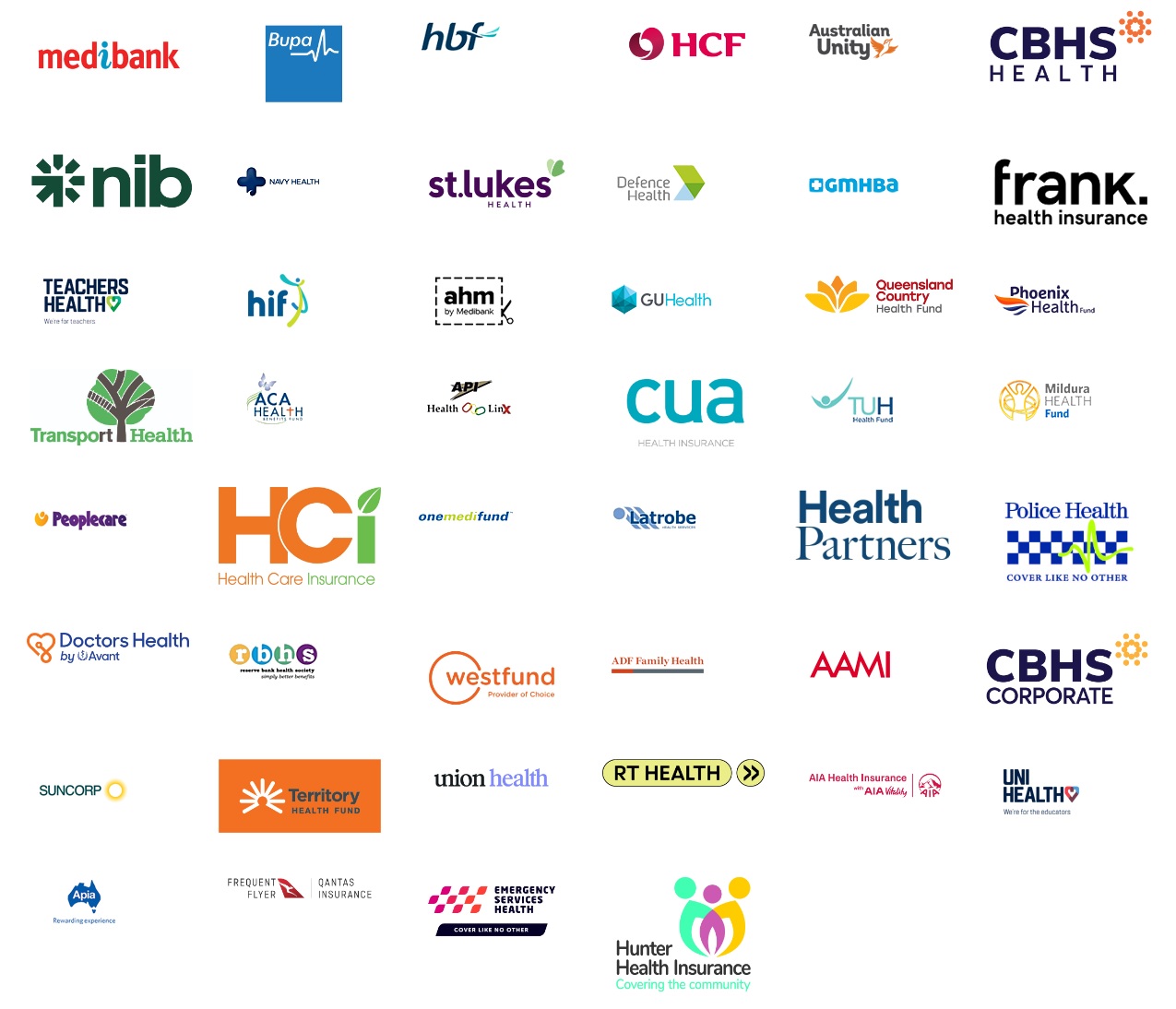
We provide HICAPS for direct debit claims for Osteopathy. Massage therapy can be claimed directly through your health fund.
Other methods of payment are cash, cheque, EFTPOS, and all major credit cards. Private health insurance is also accepted.
DVA patients are accepted.
Osteopathic treatments are recognised by the Medicare EPC scheme.
If you have a referral from your doctor, please be advised that you will be charged a gap fee which is your normal consult fee minus the $56 medicare rebate.
Please ensure you provide reception staff upon your arrival with your medicare card and a debit card to process the rebate at the clinic.
Cancellation Policy
We ask that you please notify the clinic within 24 hours of your allocated appointment time to change or cancel an appointment.
This gives us the opportunity to reallocate your appointment to another patient.
Failure to give 24-hours notice or indeed not turning up at your allocated time, will result in you being charged a $60 fee.
If your appointment is taken by someone else, you will not be charged.
Business Hours
We're open 6 days.
Monday |
9:00 pm | To | 6:00 pm |
Tuesday |
To | ||
Wednesday |
To | ||
Thursday |
To | ||
Friday |
To | ||
Saturday |
To |
Qualifications
- B. App Ccience(Osteopathy) - Master of Osteopathy
Professional Membership
- Osteopathy Australia (AOA)
Click on Send Me Details Now to get started
Send Me Details Now